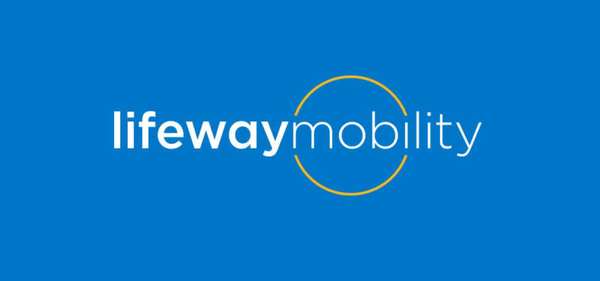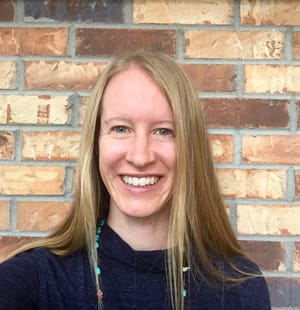As a fairly new Agency student, I recently completed my first project for Project SUCCEED, a mental health awareness training associated with JFK Partners at CU Anschutz. It aims to increase the state's capacity to address the unmet mental health needs in young children (ages 0-8) by emphasizing the fundamental importance of mental health to children's overall health and development, as well as recognizing mental health challenges faced by young children with typical development or those with developmental disabilities.
My understanding of instructional design (ID) is that it's a blend of many technical aspects – including learning theory, multimedia applications, and assessment design – but beneath the surface, it's deeply human work, and this project has shown me that. During my time on this project, which lasted from the end of March to the end of June, I had to wear another hat I wasn't expecting: a diplomat. While I was responsible for the overall project as both ID and project manager, I had no formal authority over the collaborators. This is challenging to navigate, as progress must be made to meet timelines and ensure quality. Ultimately, it was soft power that completed the project.
Leading, aligning, moving, and influencing collaborators without formal authority is a challenging task. This can show up in various ways, with some examples from this project:
- Helping stakeholders feel heard while staying on deadline
When deadlines are tight and emotions run high, people want reassurance that their voice is heard. I learned to acknowledge concerns and preferences without making promises of unlimited revisions or changes. It's simple: recognizing their concerns and clearly defining boundaries fosters progress while maintaining trust. This method helps contributors feel acknowledged without disrupting the timeline or overwhelming the design process with last-minute changes.
- Protecting the learner experience without ruffling feathers
At times, well-intentioned edits from the SMEs would complicate or even contradict our instructional goals. Whether it was overcomplicating simple concepts or removing scaffolding that helped learners, I had to protect the instructional integrity of the module. Instead of rejecting their changes outright, I would respond and remind them that we do not know who will be behind the screen going through the module. SUCCEED's audience is broad, comprising professionals who work with young children, including teachers, parents, caregivers, daycare workers, police officers, and others, representing diverse educational backgrounds, primary languages, and levels of experience. That said, the module needs to be accessible to everyone, not just graduate students. By tying decisions back to the learner experience and broader project goals, I positioned myself not as an obstacle but as an advocate for impact. This approach allowed me to kindly redirect suggestions without alienating collaborators.
With soft power, I was not exactly a boss, but more of a bridge.
For SUCCEED, I collaborated with eight collaborators, including faculty, external consultants, and content experts, each of whom brought:
- Different visions of tone and voice
- Different paces of work
- Strong ownership over their material
This created a dynamic and thoughtful workflow, but at times, it was complex.
Diplomatic moments included:
- Gently redirecting feedback that focused too much on aesthetics, language, and formatting back to content accuracy
- Responding to last-minute requests and submissions with clarity and boundaries
- Navigating high expectations with limited turnaround time while still prioritizing the learner's experience over individual preference
No one was being difficult, and everyone cared. But when timelines, tone, and tensions collided, soft skills became the most important tool I had.
Strategies that worked:
- Curate your tone - I used warm and professional language. Nothing assertive and aggressive. Every email, conversation, and comment was an opportunity to build trust, not erode it.
- Lead with transparency - Clear communication helped ease uncertainty. One thing I said was, "I want to be respectful of your time and protect our deadline, here's the plan..."
- Use empathy as a strategy - Acknowledging the reality was the best way forward. For example, if something was submitted late, I said I would do my best to include it in the final module, but I could not guarantee that it would be included. Empathy is not just for others; it can be for yourself, too.
These moments fostered connections, maintained relationships, and kept progress moving forward.
Soft power is crucial because IDs often collaborate across multiple teams, work remotely, and face tight deadlines, as well as subjective expectations about tone, voice, and representation. Even the strongest learning objectives can get lost in misalignment. Design is not about what, but about the how and with whom.
Diplomacy in ID helps:
- Reduce resistance to change
- Protect the learner experience
- Maintain momentum
- Preserve your energy and maintain a clear understanding of your role.
Being an ID and project manager means being both a learning expert and a people expert. On SUCCEED, I had to lead from the side, not from the top. It wasn't always easy, but it made me sharper, more emotionally intelligent, and more confident in my ability to guide a project to completion, even when I wasn't the one leading it. Soft power is one of the most important tools we have.














Member discussion